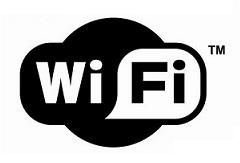WIFI
WiFi , also known as Wi-Fi , is a trademark of the Wi-Fi Alliance (an organization that adopts and certifies equipment that complies with the 802.11 standards for wireless local area networks). The Wi-Fi Alliance was known as WECA ( Wireless Ethernet Compatibility Alliance ) until 2003 .

The goal behind the WiFi brand is to promote wireless connections and facilitate the compatibility of different equipment . All products with WiFi connectivity are certified for interoperability.
The WiFi name was created by the Interbrand agency , also responsible for the development of terms such as Prozac and Compaq . The intention of the WECA was to establish a name that was easy to remember. Over time, many associated Wi-Fi with Wireless Fidelity ( “Wireless Fidelity” ).
Today, WiFi certified standards are very popular all over the world. This growth threatens the availability of the radioelectric spectrum, especially when connections must be made more than 100 meters apart (which increases the risk of interference).
One of the main flaws attributed to WiFi connectivity is its poor security . However, there are various encryption protocols that allow the transmission of data to be encrypted and to guarantee its confidentiality.
The infrastructure of a WiFi connection includes access points (remote transmitters), routers (which receive the signal emitted by the telephone operator) and reception devices (USB, PCI or PCMCIA cards).
The popularity of WiFi allows anyone with a laptop with the necessary components for accessing a wireless network to enter a large number of hotels or restaurants and connect to the Internet with their own equipment.
In recent years, there has been considerable growth in the adoption of the WiFi standard by users of all levels, in all parts of the world. It is true that it has great potential; however, as with any other technology, it also has a number of problems.
Advantages of WiFi
 Without a doubt, the strong point of this technology is the absence of cables; It is a type of connection that can connect an endless number of devices with different characteristics (such as video game consoles, telephones and televisions), avoiding users the headaches associated with finding and acquiring the right cable for each one of them. they.
Without a doubt, the strong point of this technology is the absence of cables; It is a type of connection that can connect an endless number of devices with different characteristics (such as video game consoles, telephones and televisions), avoiding users the headaches associated with finding and acquiring the right cable for each one of them. they.
The networks WiFi are especially useful in cases that do not support the use of cables; for example, they are widely used in conference rooms and international exhibitions, and are also ideal for buildings considered historical monuments, where it would be unacceptable to carry out the necessary wiring for Internet use.
In many cities, there are free access points in public places such as parks, shopping malls, subway stations, and airports. All you have to do is have a device with a WiFi Internet connection and tell it to search for available open networks.
Disadvantages of WiFi
The quality of the connection is the result of a number of factors, such as electromagnetic radiation generated by household appliances, and this directly affects the transmission speed. Despite its global standardization, many devices from different brands are not fully compatible with WiFi technology, which also has an impact on speed.
Its range of action is limited, making it especially useful for home connections. However, it is necessary to clarify that the same router offers a much more stable transmission and with a much greater range outdoors than in a house, due to the interferences mentioned in the previous paragraph.
The proximity of two or more access points can affect the quality of communication ; this is especially true in buildings where many people use this technology simultaneously.
Comments
Post a Comment